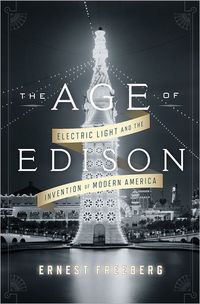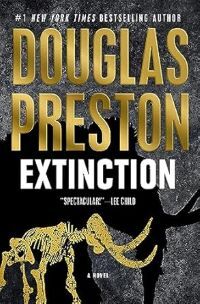

Purchase
Electric Light and the Invention of Modern America
Penguin
March 2013
On Sale: February 27, 2013
368 pages
ISBN: 1594204268
EAN: 9781594204265
Kindle: B008EKMDEO
Hardcover / e-Book
Add to Wish List
Non-Fiction | Non-Fiction History
The late nineteenth century was a period of explosive
technological creativity, but arguably the most important
invention of all was Thomas Edison’s incandescent lightbulb.
Unveiled in his Menlo Park, New Jersey, laboratory in 1879,
the lightbulb overwhelmed the American public with the sense
of the birth of a new age. More than any other invention,
the electric light marked the arrival of modernity. The lightbulb became a catalyst for the nation’s
transformation from a rural to an urban-dominated culture.
City streetlights defined zones between rich and poor, and
the electrical grid sharpened the line between town and
country. “Bright lights” meant “big city.” Like moths to a
flame, millions of Americans migrated to urban centers in
these decades, leaving behind the shadow of candle and
kerosene lamp in favor of the exciting brilliance of the
urban streetscape. The Age of Edison places the story of Edison’s invention in
the context of a technological revolution that transformed
America and Europe in these decades. Edison and his fellow
inventors emerged from a culture shaped by broad public
education, a lively popular press that took an interest in
science and technology, and an American patent system that
encouraged innovation and democratized the benefits of
invention. And in the end, as Freeberg shows, Edison’s
greatest invention was not any single technology, but rather
his reinvention of the process itself. At Menlo Park he
gathered the combination of capital, scientific training,
and engineering skill that would evolve into the modern
research and development laboratory. His revolutionary
electrical grid not only broke the stronghold of gas
companies, but also ushered in an era when strong, clear
light could become accessible to everyone. In The Age of Edison, Freeberg weaves a narrative that
reaches from Coney Island and Broadway to the tiniest towns
of rural America, tracing the progress of electric light
through the reactions of everyone who saw it. It is a
quintessentially American story of ingenuity, ambition, and
possibility, in which the greater forces of progress and
change are made visible by one of our most humble and
ubiquitous objects.
Comments
No comments posted.
Registered users may leave comments.
Log in or register now!
| 


 © 2003-2025 off-the-edge.net
all rights reserved Privacy Policy
© 2003-2025 off-the-edge.net
all rights reserved Privacy Policy